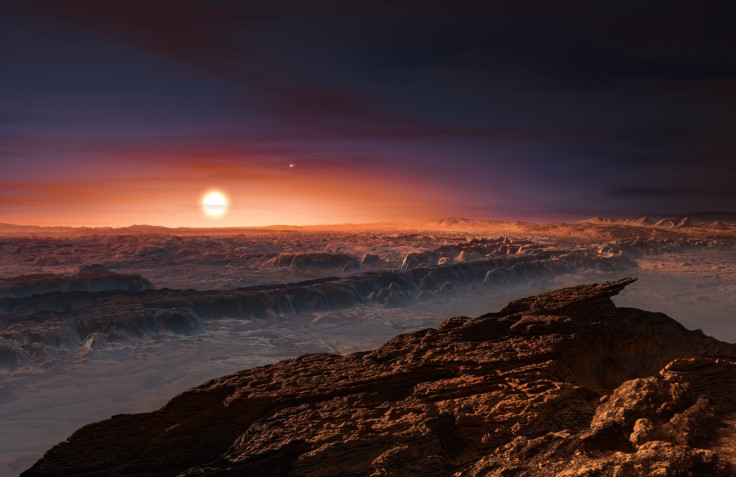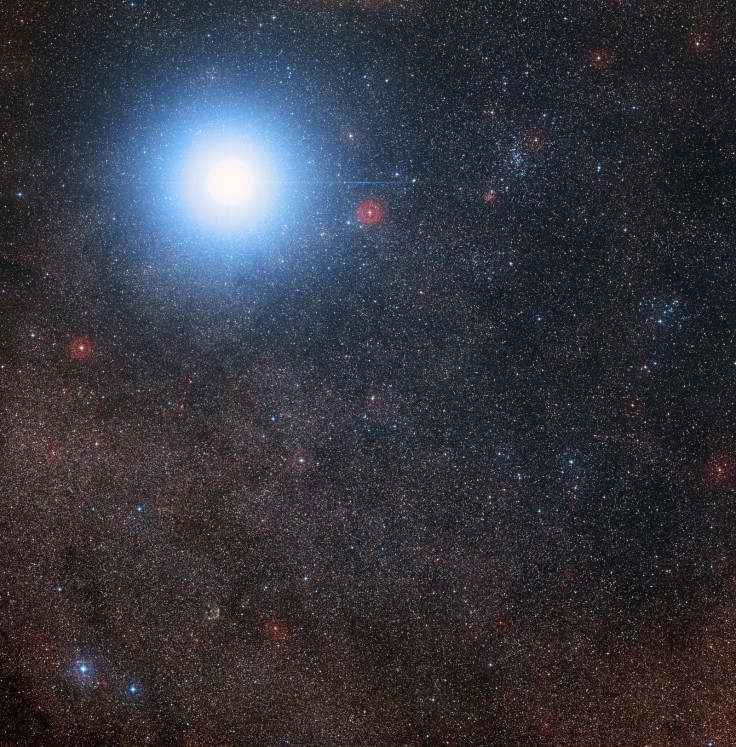New Earth-type planet discovered in habitable zone of Sun's closest neighbour
Proxima b is the closest exoplanet ever discovered, so near, in fact, that interstellar spacecraft could potentially reach it before end of the century
The tantalising prospect of finding a planet like our own which supports life is, arguably, the holy grail of scientific research. In recent years, thousands of exoplanets have been identified by astronomers but only a tiny handful have been deemed potentially habitable, while the vast majority are hundreds, if not thousands, of light years away – making them very difficult to study.
However, in a historic discovery, an international team of scientists has found clear evidence of a planet in orbit within the habitable zone of Proxima Centauri –the closest star to our Sun. The planet, named Proxima b, is the closest exoplanet to Earth ever discovered and is now the prime target in the search for life outside the Solar System. The findings have been published in the journal Nature.
The team of astronomers, led by researchers at Queen Mary University London (QMUL), identified the planet using European Southern Observatory (ESO) Telescopes as well as other facilities. Crucially, the exoplanet lies in the so-called 'Goldilocks' or habitable zone, a range of orbits where the presence of liquid water on the surface is possible, given sufficient atmospheric pressure.
Proxima Centauri is located 'just' over four light years away from Earth, a relatively paltry distance in galactic terms. It is so close in fact that, it has been mooted as a possible destination for future interstellar travel. The star is a red dwarf meaning it is far fainter than the Sun, so even though Proxima b lies very close to it – closer even than distance between Mercury and the Sun – it still lies within the habitable zone.
A team – headed by Guillem Anglada-Escudé at QMUL – had been observing Proxima Centauri for the first half of this year as part of the Pale Red Dot campaign, which was set up to look for signals that could suggest the presence of a planet.
"The first hints of a possible planet were spotted back in 2013, but the detection was not convincing", Anglada-Escudé said. "Since then we have worked hard to get further observations off the ground with help from ESO and others. The recent Pale Red Dot campaign has been about two years in the planning."

Scientists combined the data from the Pale Red Dot project with previous observations made at ESO facilities and elsewhere, resulting in the extraordinary finding. Their data showed that sometimes Proxima Centuari is moving towards Earth at 5km/h, while at other times it is moving away at the same speed, with the direction of movement switching every 11.2 days. These movements - known as 'Doppler wobbles' – can indicate the presence of an orbiting planet exerting a gravitational pull on the star, which, along with further analysis, allowed the team to confirm its presence.
Very little is currently known about Proxima b, but scientists have been able to infer what kind of planet it is with the information available to them. Their data suggests that Proxima b is a rocky world about 1.3 times the size of Earth, orbiting its star every 11 days at a distance of 7 million kilometres. Despite being very close to Proxima Centauri, the planet receives only about 65% of the energy that the Earth receives from the sun.
Because of gravitational forces, it is almost certain that the planet is tidally locked, meaning the same side will always be facing the star, leaving the other in perpetual darkness. As a result, there is a strong possibility that it does not have seasons. Scientists think the existence of an atmosphere is possible and that temperatures could be amenable to supporting liquid water – crucial for life as we know it to flourish. In addition, if water is found on the surface, it will most likely be in the sunnier regions or temperate tropical regions.
However, it is important not to jump to conclusions regarding the existence of life on the planet. Traditional views regarding similar planets which lie close to red dwarf stars suggest that life may not be sustainable on Proxima b. Stars like Proxima are very active, meaning the planet will likely be bombarded by ultraviolet light and intense X-ray flares, leading to conditions that are probably quite different to Earth's.
Despite this, the scientists insist that these possible drawbacks do not exclude the possibility of finding life. Whether it is habitable or not, they say, will depend on the planet's formation and evolutionary history. According to Ansgar Reiners, who was involved in the research, there are "a lot of [computer] models and simulations which include the existence of atmospheres and water" on Proxima b, given the right conditions. One model, for example, shows how heat could be distributed around the planet - even though one side likely receives most of the heat and light from the star - given the right atmospheric and wind conditions, leading to a more stable climate.

The question over the existence of life on Proxima b won't be resolved until direct observations can be made. Promisingly though, because it is the nearest exoplanet ever discovered, it offers an "unprecedented observation opportunity", according to Anglada-Escudé, which will allow scientists to conduct extensive further examination using both current technology and next-generation telescopes, set to be rolled out over the next few years. These include the European Extremely Large Telescope (E-ELT), the Transiting Exoplanet Survey Satellite and the James Webb Telescope. The latter will have the ability to analyse the atmospheres of exoplanets, which could help researchers determine the habitability of Proxima b.
Perhaps the most fascinating aspect of the Proxima b discovery is the implications it will have for future interstellar travel. "This is a planet within our neighbourhood", said Anglada-Escudé, one that is certainly within reach of space probes that could be launched in the not-too-distant future.
One notable example is the ambitious Breakthrough Starshot project, funded by Russian billionaire Yuri Milner and backed by Stephen Hawking and Mark Zuckerberg. The concept behind Starshot is to launch thousands of 'nanocrafts' – complete with thin, unfolding, lightsails – into orbit via a 'mothership'. These tiny spacecraft – measuring a few centimetres across and weighing just a few grams – would be propelled by powerful Earth-based laser arrays which focus on the crafts' sails, accelerating them to speeds of up to 20% the speed of light.
The Alpha Centauri star system - of which Proxima Centauri is part of - was already the main target of Starshot. Travelling at 20% the speed of the light, the probes that survive would reach Alpha Centauri in just 20 years, and would be able to transmit data back to Earth. By comparison, traditional space probes would take tens of thousands of years to cover the same distance.
In response to the discovery, the mission will now "re-aim" to Proxima b – which is even closer to Earth than Alpha Centauri – according to Pete Worden, director of the Starshot project, speaking at an ESO press conference to announce the finding of the planet. While Starshot and interstellar travel may seem like a fanciful prospect, the technology available today is sufficient to begin seriously thinking about it. There a still number of key challenges to overcome, but if sufficient advances are made, Milner speculates that the project could be ready for launch in 20 years - barring delays and funding shortages. This means space probes could reach Proxima b well within this century, possibly even by 2060, Worden suggests.
Intriguingly, the team of astronomers who made the discovery think that there are likely to be further planets in the same star system, opening up further possibilities for exploration.
"Many exoplanets have been found and many more will be found, but searching for the closest potential Earth-analogue and succeeding has been the experience of a lifetime for all of us", said Anglada-Escudé. "Many people's stories and efforts have converged on this discovery. The result is also a tribute to all of them. The search for life on Proxima b comes next..."
© Copyright IBTimes 2024. All rights reserved.





